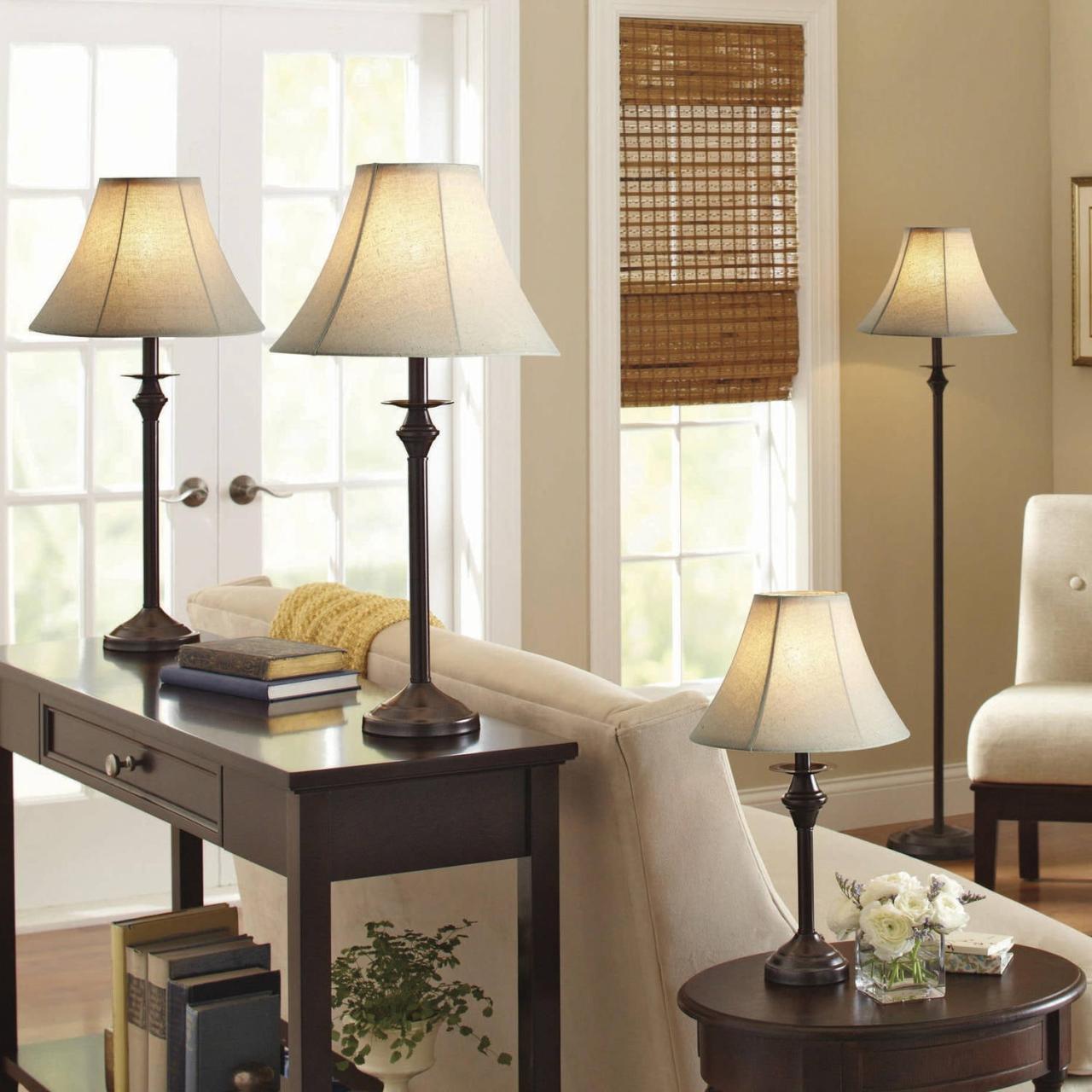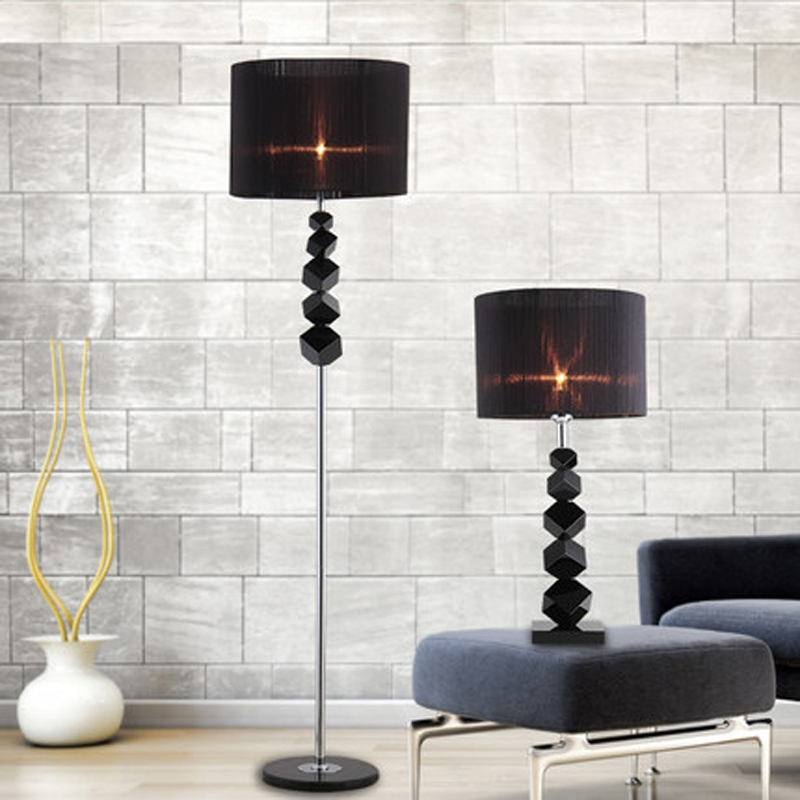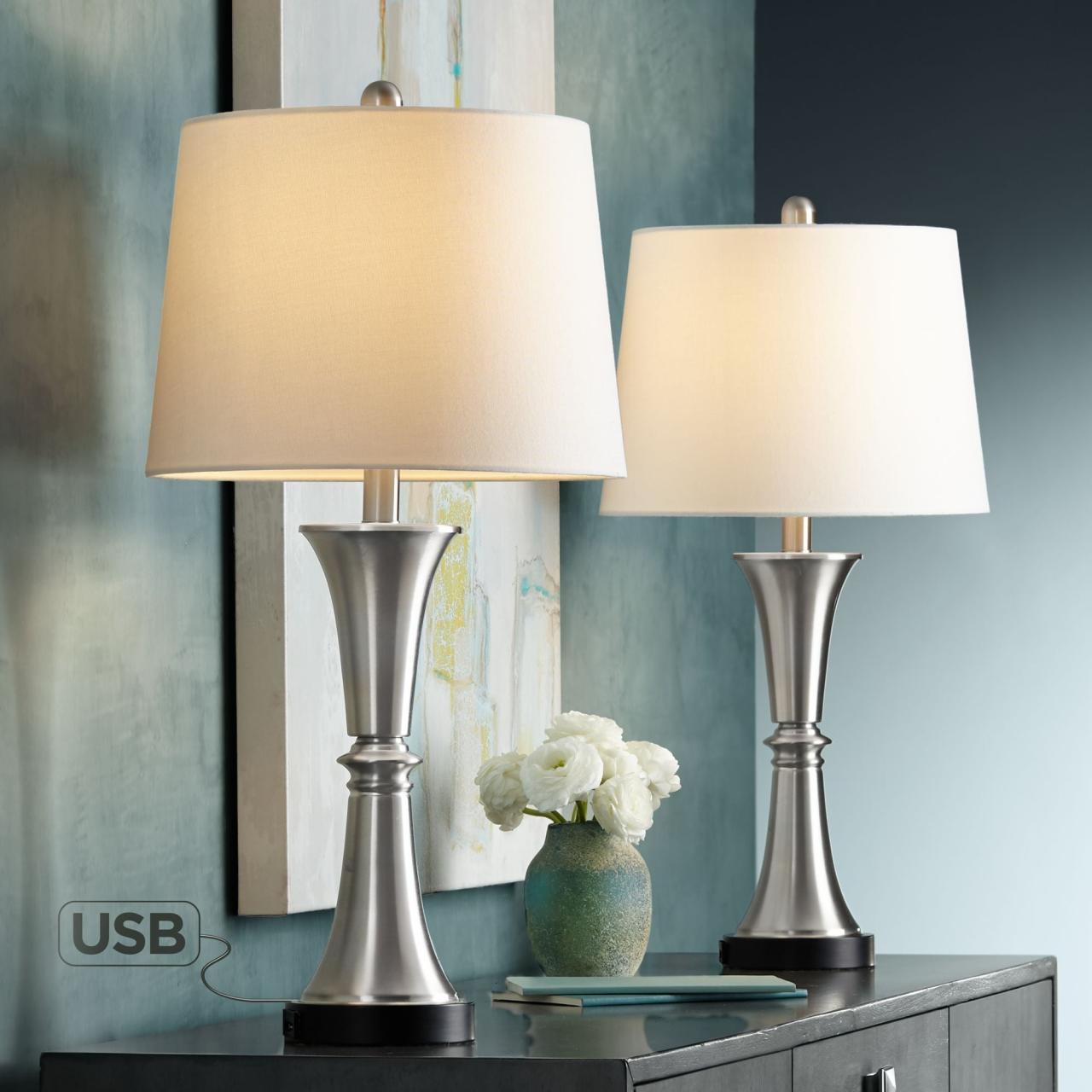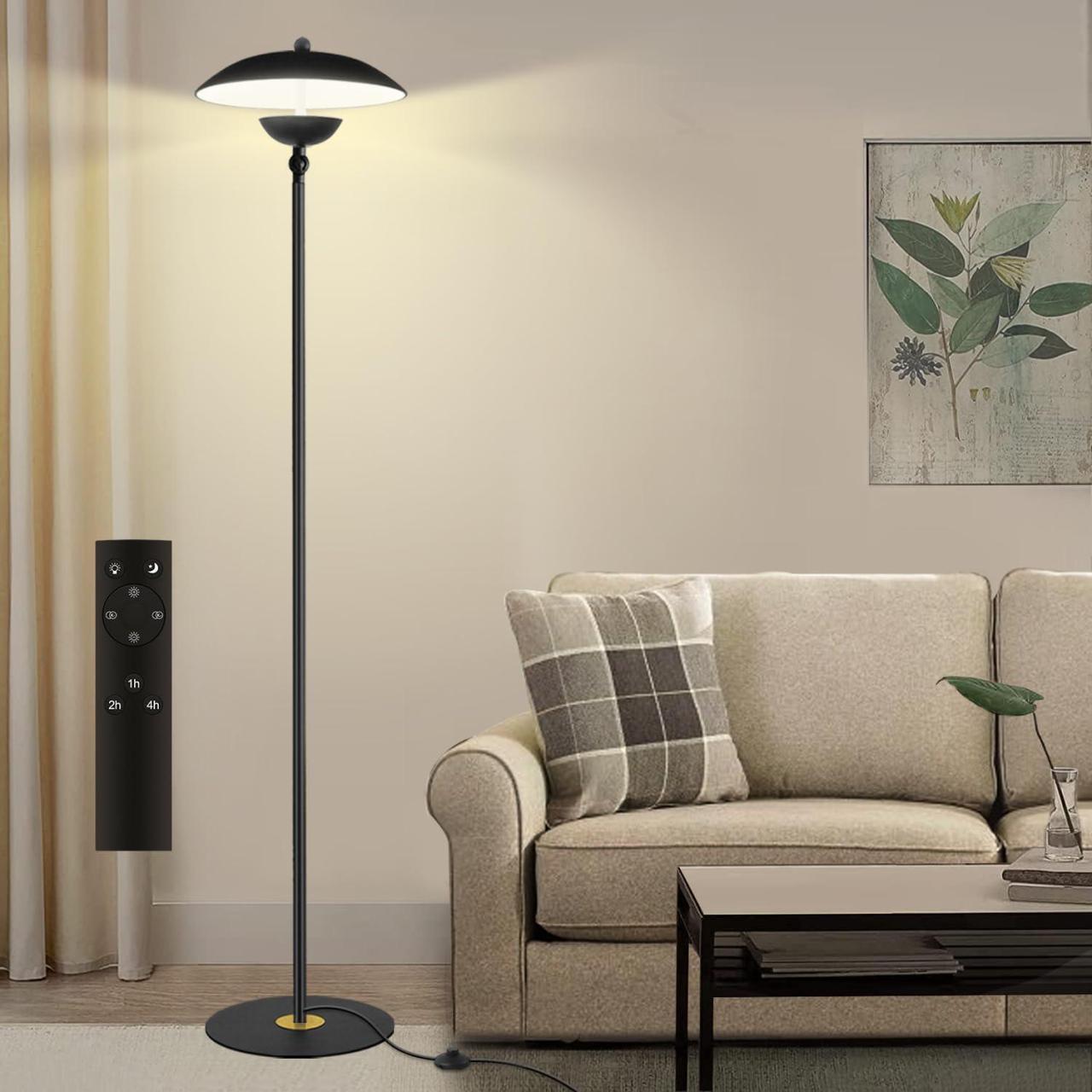Lamps for living room: Transforming a house into a home isn’t just about furniture; it’s about the ambiance. And what better way to set the mood than with the perfect lighting? From sleek floor lamps to elegant chandeliers, the right lamps can dramatically alter the feel of your living room, turning it into a cozy haven or a vibrant social hub.
This guide dives deep into the world of living room lighting, exploring various styles, placement strategies, and energy-efficient options to help you create the perfect atmosphere.
We’ll explore different lamp types, like the classic table lamp, the statement-making floor lamp, and the overhead drama of pendant lights and chandeliers. We’ll also cover how to strategically place your lamps to highlight architectural details or artwork, creating a space that’s both functional and aesthetically pleasing. Plus, we’ll discuss the latest trends in living room lamp design, helping you find the perfect fit for your personal style.
Types of Living Room Lamps

Choosing the right lighting for your living room can dramatically impact its ambiance and functionality. From providing task lighting for reading to setting a warm and inviting mood for relaxation, the type of lamp you choose plays a crucial role. Let’s explore the diverse options available to illuminate your living space effectively and stylishly.
Floor Lamps
Floor lamps offer a versatile and stylish way to add ambient or task lighting to your living room. They range in height from approximately 50 to 70 inches, with variations depending on the style and design. Materials commonly used include metal (steel, brass, wrought iron), wood, and various fabrics for shades. A classic example is the arched floor lamp with a linen shade, offering a sophisticated and timeless aesthetic.
Alternatively, a sleek, minimalist floor lamp made of brushed steel and a simple conical shade would suit a modern living room.
Table Lamps
Table lamps are perfect for bedside tables, sideboards, or coffee tables, providing focused illumination for reading or adding a touch of elegance to a surface. They typically range from 12 to 24 inches in height. Materials vary greatly, from ceramic and glass to wood and metal, allowing for a wide range of styles. A pair of ornate porcelain table lamps with silk shades could complement a traditional living room, while a simple, geometric glass table lamp with a metal base would fit seamlessly into a contemporary setting.
Pendant Lights
Pendant lights hang from the ceiling and are ideal for illuminating a specific area, such as a dining table or a reading nook within the living room. Sizes vary considerably, depending on the number of lights and the overall design. Materials range from glass and metal to woven materials and even wood. A single, large glass pendant light can create a dramatic focal point, while a cluster of smaller pendant lights offers a more distributed light source.
Materials and styles can greatly influence the overall effect, with modern designs often using sleek metal frames and clear glass, while traditional styles might feature intricate metalwork and colored glass.
Chandeliers
Chandeliers are statement pieces that add a touch of grandeur and elegance to a living room. They come in a wide range of sizes and styles, from small, minimalist designs to large, elaborate crystal chandeliers. Materials commonly used include crystal, metal (brass, iron), and glass. A crystal chandelier immediately evokes a sense of luxury and sophistication, while a wrought iron chandelier with simple glass shades can offer a more rustic or industrial feel.
Height varies considerably, with some reaching several feet in height.
| Lamp Type | Style | Material | Average Price Range |
|---|---|---|---|
| Floor Lamp | Modern, Traditional, Rustic | Metal, Wood, Fabric | $50 – $500+ |
| Table Lamp | Modern, Traditional, Art Deco | Ceramic, Glass, Wood, Metal | $20 – $300+ |
| Pendant Light | Modern, Industrial, Farmhouse | Glass, Metal, Woven Materials | $30 – $500+ |
| Chandelier | Traditional, Modern, Crystal | Crystal, Metal, Glass | $100 – $2000+ |
Lighting Styles and Ambiance
Crafting the perfect living room atmosphere hinges on thoughtful lighting. More than just illuminating the space, lamps set the mood, highlight architectural details, and enhance the overall aesthetic. Understanding different lighting styles and how color temperature impacts ambiance is key to achieving your desired living room vibe.Lighting styles in a living room aren’t just about brightness; they’re about layering light to create depth and visual interest.
By strategically combining different types of lighting, you can transform your space from a dimly lit haven to a vibrant and energetic hub.
Ambient Lighting
Ambient lighting provides overall illumination, setting the foundational mood for the room. Think of it as the soft, general glow that washes over the entire space. Recessed lighting, chandeliers, or large, softly diffused floor lamps are excellent choices for achieving ambient lighting. A warm, inviting atmosphere is created with a low-intensity, diffused light source that evenly distributes light throughout the room, minimizing harsh shadows.
For instance, a large, linen-shaded floor lamp emitting a warm white light (around 2700K) would create a cozy and relaxing feel.
Task Lighting
Task lighting focuses on specific areas where activities are performed, such as reading, working, or crafting. Table lamps with adjustable arms, desk lamps, or even strategically placed spotlights are ideal. The key here is focused, bright light to facilitate the task at hand. A cool white light (around 5000K) is often preferred for task lighting as it helps reduce eye strain and improves clarity.
Imagine a sleek, adjustable desk lamp with a bright, cool-white LED bulb illuminating a workspace.
Accent Lighting
Accent lighting is used to highlight specific features or artwork, adding visual interest and depth to the room. This could involve using track lighting to showcase paintings, or smaller lamps to illuminate a sculpture or a plant. Accent lighting can be warm or cool, depending on the desired effect and the piece being highlighted. A warm white accent light can create a warm and inviting glow on a piece of art, while a cooler light can add a modern and crisp touch.
Choosing the right lamps can dramatically transform your living room’s ambiance. The perfect lighting complements your overall décor, and to achieve that cohesive look, consider the style of your other living room furniture ; a sleek modern sofa might pair best with minimalist lamps, while a traditional setting calls for something more ornate. Ultimately, the right lamps will tie your entire living room design together, creating a space that’s both stylish and functional.
Consider a small, directional spotlight highlighting a unique piece of pottery on a shelf.
Color Temperature and Mood
Color temperature is measured in Kelvin (K) and dictates the perceived warmth or coolness of the light. Lower Kelvin values (2700K-3000K) represent warmer, more yellowish tones, often associated with relaxation and comfort. Higher Kelvin values (5000K-6500K) produce cooler, bluer light, ideal for focus and energy. Neutral light (around 4000K) falls in between, offering a balanced and versatile option.
- Warm White (2700K-3000K): Creates a cozy, intimate atmosphere. Ideal for living rooms designed for relaxation and socializing. Examples include incandescent bulbs, halogen lamps, and some LED bulbs with a warm white color temperature setting.
- Cool White (5000K-6500K): Promotes alertness and focus. Suitable for rooms where tasks requiring concentration are performed, although not ideal for an entire living room unless balanced with warmer light sources. Examples include fluorescent bulbs and many LED bulbs.
- Neutral White (4000K): Offers a balanced and versatile option, suitable for most living rooms. It’s a good compromise between warm and cool, creating a bright yet comfortable environment. Many LED bulbs offer this option.
Lamp Combinations for Diverse Lighting Schemes
The most effective living room lighting often involves a combination of different lamp types. Layering light allows for flexibility and control over the overall ambiance.
- Floor Lamp + Table Lamp: A floor lamp provides ambient lighting, while a table lamp offers task lighting for reading or other activities. This combination creates a balanced and functional lighting scheme.
- Pendant Light + Table Lamps: A pendant light serves as the main ambient light source, while strategically placed table lamps offer accent lighting and task lighting, highlighting specific areas and objects.
- Floor Lamp + Wall Sconces: A floor lamp provides general illumination, while wall sconces offer softer accent lighting, adding warmth and depth to the room. This creates a sophisticated and layered lighting effect.
Placement and Design Considerations: Lamps For Living Room

Lighting is more than just illumination; it’s the secret weapon to transforming your living room from drab to fab. Strategic lamp placement isn’t just about seeing clearly; it’s about creating mood, highlighting architectural details, and showcasing your style. Get it right, and your living room will feel instantly more inviting and sophisticated.Optimal lamp placement depends heavily on your living room’s size and layout.
A spacious room offers more flexibility, allowing for multiple light sources and layered illumination. Smaller spaces, however, require a more thoughtful approach to avoid overcrowding and maintain a sense of openness. Understanding the interplay between light, space, and furniture arrangement is key to achieving the perfect balance.
Lamp Placement to Enhance Illumination and Aesthetics
In larger living rooms, consider a combination of ambient, task, and accent lighting. A central ceiling fixture provides ambient light, while floor lamps or table lamps offer focused task lighting for reading or other activities. Accent lighting, such as strategically placed spotlights or small lamps, can highlight artwork or architectural features. For example, a floor lamp positioned next to a comfortable armchair creates a cozy reading nook, while a table lamp on a side table provides soft light and a stylish focal point.
Choosing the right lamps for your living room can dramatically elevate its ambiance. To stay ahead of the curve, consider incorporating styles aligned with the best luxury home interior design trends 2024 , which often feature statement pieces. Think sculptural designs or luxurious materials for a truly impactful lighting scheme that sets the mood in your living space.
In smaller living rooms, prioritize multi-functional lamps that provide both ambient and task lighting. A stylish floor lamp with an adjustable arm, for instance, can serve as both a statement piece and a practical reading light. Avoid cluttering the space with too many lamps; a well-placed single lamp can often suffice.
Using Lamps to Highlight Architectural Features or Artwork
Think of your lamps as artistic tools. A well-placed lamp can dramatically enhance the beauty of your home’s architecture or your prized artwork. For instance, a tall, slender floor lamp positioned beside a fireplace draws attention to the fireplace’s elegant lines and creates a warm, inviting atmosphere. Similarly, a strategically placed spotlight can dramatically highlight a favorite painting or sculpture, transforming it into a true centerpiece.
Imagine a gallery wall with small, adjustable spotlights subtly illuminating each piece, creating a professional and sophisticated gallery feel. The contrast between light and shadow adds depth and dimension, making the artwork truly pop.
Design Tips for Choosing Lamps
Choosing lamps that complement your existing furniture and décor is crucial for a cohesive and stylish living room. Consider the following:
- Scale and Proportion: Select lamps that are appropriately sized for your furniture and the overall room dimensions. A small lamp on a large sofa can look lost, while an oversized lamp can overwhelm a small space.
- Style and Material: Choose lamp styles and materials that complement your existing furniture and décor. A modern, minimalist lamp might look out of place in a traditional setting, while a rustic, wooden lamp might clash with sleek, contemporary furniture.
- Color and Finish: Consider the color and finish of your lamps in relation to your existing color palette. Metallic finishes can add a touch of glamour, while natural materials like wood or bamboo create a warm and inviting atmosphere.
- Light Bulb Type: The type of light bulb you choose will affect the ambiance of your living room. Warm-toned bulbs create a cozy atmosphere, while cooler-toned bulbs provide a more modern and energetic feel. Experiment to find the perfect balance.
Energy Efficiency and Technology

Choosing the right lighting for your living room isn’t just about aesthetics; it’s also about energy efficiency and the smart technology that can enhance your home’s ambiance and functionality. Understanding the different lamp technologies and their features will help you make informed decisions that save you money and improve your living experience.Different lamp technologies offer varying levels of energy efficiency and lifespan.
Let’s explore the pros and cons of some popular choices.
Comparison of Lamp Technologies, Lamps for living room
The table below compares incandescent, halogen, and LED lamps across key parameters. Energy consumption and lifespan are critical factors to consider when choosing lighting for your home, impacting both your electricity bill and the frequency of bulb replacements.
| Feature | Incandescent | Halogen | LED |
|---|---|---|---|
| Energy Efficiency | Low (most energy converted to heat) | Slightly better than incandescent | High (most energy converted to light) |
| Lifespan (hours) | 750-1000 | 2000-4000 | 25,000-50,000+ |
| Heat Output | High | High | Low |
| Cost | Low initial cost | Moderate initial cost | Higher initial cost |
Smart Lamp Features and Home Automation
Smart lamps offer a range of features that go beyond simple illumination. They can be integrated with home automation systems, allowing for voice control, scheduling, and remote operation. This level of control significantly enhances convenience and energy efficiency.For example, Philips Hue smart bulbs allow you to control lighting via a smartphone app or voice assistants like Alexa or Google Assistant.
You can set schedules to automatically turn lights on and off, create personalized scenes with different colors and brightness levels, and even integrate them with other smart home devices for a seamless experience. Imagine setting your living room lights to a warm, inviting glow as you arrive home, or automatically dimming them at bedtime. Another example is LIFX, which offers similar features with a strong focus on color customization and effects.
Energy Savings Calculation
Switching to energy-efficient lamps can lead to significant savings on your electricity bill. Let’s illustrate this with a simple calculation.Let’s assume you replace ten 60-watt incandescent bulbs with ten 10-watt LED bulbs. Each incandescent bulb is used for an average of 5 hours per day.First, calculate the daily energy consumption of the incandescent bulbs:
10 bulbs
- 60 watts/bulb
- 5 hours/day = 3000 watt-hours/day = 3 kilowatt-hours (kWh)/day
Next, calculate the daily energy consumption of the LED bulbs:
10 bulbs
- 10 watts/bulb
- 5 hours/day = 500 watt-hours/day = 0.5 kilowatt-hours (kWh)/day
The daily energy savings are:
3 kWh/day – 0.5 kWh/day = 2.5 kWh/day
Assuming an electricity price of $0.15 per kWh, the daily cost savings are:
2.5 kWh/day
$0.15/kWh = $0.375/day
Annual savings:
$0.375/day
365 days/year = $136.88/year
This demonstrates that switching to energy-efficient LEDs can result in substantial cost savings over time, justifying the higher initial investment.
Popular Lamp Styles and Trends

Living room lighting is more than just illumination; it’s a crucial element in setting the mood and defining the style of your space. Current trends reflect a move towards personalized aesthetics, blending functionality with design innovation. Materials and styles are constantly evolving, offering a diverse range of options to suit every taste and interior design preference.
Current Trends in Living Room Lamp Design and Materials
The contemporary living room lamp scene is a vibrant mix of old and new. Natural materials like rattan, bamboo, and reclaimed wood are experiencing a surge in popularity, reflecting a growing eco-conscious design trend. These materials often feature in artisan-crafted lamps, adding a touch of handcrafted warmth. Metal finishes, particularly brushed brass, matte black, and aged copper, remain steadfast favorites, offering a sophisticated and versatile aesthetic that complements various décor styles.
Glass remains a classic choice, with innovative designs showcasing intricate textures and captivating shapes. We’re also seeing a rise in lamps incorporating sustainable and recycled materials, demonstrating a commitment to environmentally friendly design. For instance, lamps made from recycled glass or repurposed metal are gaining traction among environmentally conscious consumers.
Comparison of Modern, Traditional, and Transitional Lamp Styles
Modern lamps often feature clean lines, minimalist designs, and a focus on functionality. Think sleek metal arc lamps with adjustable heads or simple, geometric table lamps in bold colors. Materials are typically sleek and unadorned, with a preference for metal, glass, or high-gloss plastics. In contrast, traditional lamps embrace classic designs and ornate details. They often feature rich materials like velvet, silk, or intricate wood carvings, with shapes that evoke historical styles like Victorian or Art Deco.
Think elaborate crystal chandeliers or intricately detailed porcelain table lamps. Transitional lamp styles bridge the gap between modern and traditional, blending clean lines with classic elements. These lamps might feature a simple silhouette but incorporate luxurious materials or subtle ornamentation, creating a balanced and sophisticated look. For example, a transitional table lamp might have a sleek, cylindrical base in brushed nickel paired with a linen shade.
Visual Description of a Living Room with Three Different Lamp Styles
Imagine a spacious living room with three distinct lighting zones, each showcasing a different lamp style. Near the fireplace, a large, ornate crystal chandelier hangs from the ceiling, casting a warm, ambient glow. Its traditional style, with its cascading crystals and intricate metalwork, creates a sense of elegance and grandeur, anchoring the room’s traditional elements. On a side table, a sleek, minimalist arc lamp in brushed brass stands tall, providing focused task lighting for reading.
Its modern design, with its clean lines and adjustable arm, adds a touch of contemporary sophistication and practicality. Finally, in a cozy reading nook, a transitional table lamp with a linen shade and a simple wooden base sits on a small side table. The lamp’s blend of modern simplicity and traditional warmth creates a calming and inviting atmosphere, complementing the overall balance of the room’s design.
The interplay of these three lighting styles – traditional, modern, and transitional – creates a visually rich and harmonious atmosphere, demonstrating how different styles can coexist beautifully within a single space.